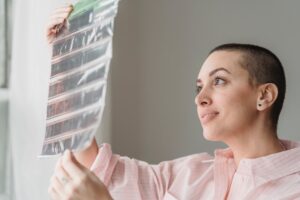Animation is an art form that has captured the hearts and imagination of people all over the world. It’s a medium that allows artists to bring their drawings to life, creating characters and stories that can inspire, entertain, and educate audiences of all ages. From classic Disney films to modern anime series, animation has become one of the most beloved forms of storytelling in our culture. But how exactly does this magical process work? And what are some of the different types of animation out there? Join us as we explore The Art of Animation: Bringing Drawings to Life!
What is animation?
Animation is the art of bringing drawings to life. It’s a process of creating movement and motion in static images, giving them the illusion of life. In other words, animation is a technique that allows artists to create characters and objects that move on their own.
To make an animation, animators draw a series of images or frames which are then played back at high speed to give the impression of motion. The process can be done by hand on paper or digitally using software programs such as Adobe Animate, Toon Boom Harmony or Blender.
Animation has been around for over 100 years since it was first introduced in films like “Steamboat Willy” with Mickey Mouse as its star character created by Walt Disney Studios in 1928. Since then, technology has evolved dramatically making it easier and more accessible for people to produce animations from their computers at home.
There are many different types of animation techniques including traditional hand-drawn animation, stop-motion animation, computer-generated imagery (CGI), cut-out animation and many others each offering their unique advantages and limitations depending on the desired outcome.
Animation is an incredibly versatile medium; it can be used for entertainment purposes such as movies or cartoons but also serves educational purposes in explaining complex topics through visual aids.
The history of animation
The history of animation is a fascinating one, dating back to thousands of years ago. The earliest recorded examples of animation come from ancient cave paintings in Indonesia and Egypt where animals were depicted with multiple legs, suggesting movement.
In the mid-1800s, devices like the zoetrope and praxinoscope used spinning discs with sequential images to create the illusion of motion. But it was not until 1906 that J. Stuart Blackton created “Humorous Phases of Funny Faces”, widely considered as the first animated film.
The Golden Age of Animation began in the 1930s when Walt Disney introduced Mickey Mouse in “Steamboat Willie”. Disney’s innovations included synchronized sound, full-color Technicolor films, and multiplane cameras that added depth to animation.
During World War II, many animators transitioned into creating propaganda films for their respective countries. Afterward came a period where television cartoons dominated family entertainment before computer-generated imagery (CGI) revolutionized animation once again at the end of the century.
Today’s modern age sees animated content everywhere – from blockbuster movies to mobile games – making it an exciting time for anyone interested in art and animation!
How animation is made

Animation is a mesmerizing art form that brings drawings to life. But have you ever wondered how this magic happens? There are different techniques and tools used in animation, but the basic process remains the same.
Firstly, an animator creates a storyboard with rough sketches of each scene. This acts as a blueprint for the final animation. Once approved, the animators create detailed character designs and backgrounds before moving on to keyframes.
Keyframes are significant moments in an animated sequence, such as when a character moves from one pose to another. These frames help set up the timing and motion of the entire sequence.
Next comes the “in-betweening” stage where additional frames are added between keyframes to create a smooth transition between movements. After that, sound effects and music are added to bring more depth and emotion to the animation.
Everything is compiled together into one cohesive piece through digital editing software like Adobe Premiere or Final Cut Pro.
Creating animations can be time-consuming but rewarding work that requires patience and attention to detail – it truly is an art form!
Different types of animation
Animation is an art form that can take on many different styles and techniques. Some of the most common types of animation include traditional hand-drawn, stop-motion, 3D computer-generated imagery (CGI), motion graphics, and rotoscoping.
Traditional hand-drawn animation involves creating each frame by hand, usually with pencil and paper. This style has been around since the early days of animation and remains popular today for its unique look and feel.
Stop-motion animation involves capturing individual frames of physical objects or puppets in small movements to create a fluid sequence when played back at full speed. This technique is often used in children’s shows like Wallace & Gromit.
3D CGI animation uses computer software to create lifelike digital models that are then animated using specialized tools. This technique has become increasingly popular due to its versatility and ability to create stunning visuals.
Motion graphics are another type of animation often used in marketing videos, explainer videos or title sequences where text or graphical elements move across the screen along with other visual effects.
Rotoscoping is yet another type of animation which involves tracing over live action footage frame-by-frame to create an animated version.
Each type brings something unique to the table but all require patience, creativity, skillful execution as well as a deep understanding about how movement works in order make it come alive on screen.
Pros and cons ofanimation
Animation is an art form that has taken the world by storm. From Disney classics to Pixar masterpieces, animation has captivated audiences of all ages with its ability to bring drawings to life. However, like any other medium, there are pros and cons to this craft.
One of the biggest advantages of animation is its versatility. Animators can create anything they imagine without being limited by physical reality. They have total control over their characters’ movements, expressions and actions which allows for endless possibilities in storytelling.
Another benefit of animation is its accessibility. With advancements in technology, it’s become easier than ever for anyone with a computer and software to try their hand at creating animations. This democratization of the medium has led to more diverse stories being told from different perspectives.
On the downside, animating can be a time-consuming process that requires patience and attention-to-detail. It can take months or even years just to complete one project depending on its complexity which may lead some artists feeling burnt out or frustrated.
Additionally, while animated films have been widely accepted as family-friendly entertainment suitable for children and adults alike, some people still view it as juvenile or not serious enough compared to live-action movies.
In conclusion (just kidding!), every art form comes with both benefits and drawbacks – animation included! Despite these downsides though,it cannot be denied thatanimation remainsoneofthe most captivatingand imaginative mediumsusedto tell storiesand entertainaudiences aroundthe globe
The future of animation
The future of animation is an exciting prospect, as technology continues to evolve and improve.
One major development in recent years has been the rise of virtual reality (VR) and augmented reality (AR) technologies.
These two could revolutionize the way we experience animation.
With VR, viewers can immerse themselves fully in animated worlds and interact with characters in ways that were previously impossible.
Meanwhile, AR allows for animations to be overlaid onto real-world environments, creating new possibilities for advertising and entertainment.
Another trend in animation is the use of artificial intelligence (AI), which can streamline the process of creating animations.
This is done by automating tasks such as rendering or lip-syncing.
It could lead to faster production times and lower costs for studios.
There is a growing interest in using animation as a tool for education and training purposes.
With advances in AI and VR/AR technologies, it may soon be possible to create highly realistic simulations that can help people learn complex skills or practice high-stakes scenarios without any risk.
The future of animation looks bright with endless possibilities waiting to be explored through technological advancements.
Conclusion
The art of animation has come a long way since its inception.
From the early days of hand-drawn animation to modern computer-generated graphics, animators have created special fascinations.
It has been engaging the worlds, bringing drawings to life in a way that was once unimaginable.
Today, animation is used in various industries, including film, television, advertising, gaming and education.
It’s an essential tool for storytelling and communication that can evoke emotions.
Especially from viewers and help them connect with characters on screen.
As technology continues to advance and evolve day by day, so does the world of animation.
We can expect even more innovative techniques like motion capture or virtual reality being implemented into animated productions.
The future looks bright for animators who are using their artistic talent and technological skills to create something truly remarkable.
The possibilities are endless when it comes to the art of bringing drawings to life through animation.
Let’s sit back and enjoy what comes next!








